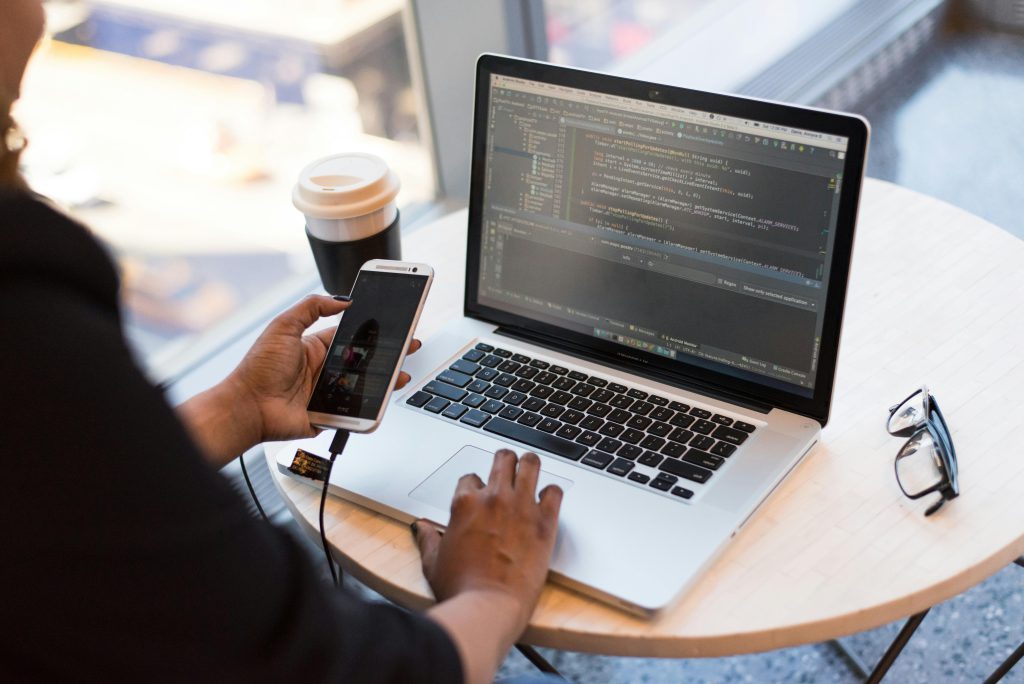Introduction 🚀
A full-stack developer is a versatile programmer who can work on both the front-end (user-facing) and back-end (server-side) of web applications. With the demand for full-stack developers rising globally, acquiring the right skills can open up a world of career opportunities. This article explores the essential technical and soft skills needed to become a successful full-stack developer, along with practical tips to help you stand out in the competitive job market.
1. What Does a Full-Stack Developer Do? 🧩
A full-stack developer is responsible for designing, building, and maintaining both the client-side and server-side components of a web application. Their work involves:
- Front-End Development: Creating responsive and interactive user interfaces using HTML, CSS, and JavaScript.
- Back-End Development: Building server-side logic, managing databases, and ensuring data flow using languages like Node.js, Python, or PHP.
- Database Management: Designing, querying, and managing databases to store and retrieve data efficiently.
- Version Control: Using tools like Git to track code changes and collaborate with teams.
- Deployment and Maintenance: Deploying applications on cloud platforms like AWS, Azure, or Google Cloud and ensuring their smooth operation.
2. Essential Front-End Skills 💻🖥️
The front-end is the part of a web application that users see and interact with. To create visually appealing and user-friendly interfaces, full-stack developers need proficiency in the following:
- 1. HTML (HyperText Markup Language): The foundation of web development, used to structure content on web pages.
- 2. CSS (Cascading Style Sheets): Styles the appearance of web pages, ensuring they are visually appealing and responsive.
- 3. JavaScript: Enables dynamic content, interactivity, and animations on websites.
✅ Frameworks and Libraries to Learn:
- React.js: Popular for building dynamic and fast user interfaces.
- Angular: A powerful framework for developing large-scale applications.
- Vue.js: Lightweight and easy-to-learn, ideal for building interactive web interfaces.
- Bootstrap: A CSS framework that simplifies responsive web design.
📱 Responsive Design:
Understanding responsive design principles and using frameworks like Bootstrap or CSS Grid ensures that applications work seamlessly on all devices.
3. Essential Back-End Skills 🗃️💾
The back-end is the server-side of a web application, responsible for handling data, logic, and server communication. Full-stack developers should be skilled in the following:
-
1. Programming Languages:
- Node.js: A JavaScript runtime for building scalable and fast server-side applications.
- Python: Known for its simplicity and frameworks like Django and Flask.
- Java: Widely used for building enterprise-level applications.
- Ruby: Used with the Ruby on Rails framework for rapid development.
-
2. Databases:
- SQL Databases: MySQL, PostgreSQL, and SQLite are essential for structured data storage.
- NoSQL Databases: MongoDB and Firebase are ideal for unstructured data and real-time applications.
-
3. Server Management:
- Understanding how servers work and using platforms like Apache, Nginx, or Express.js to manage server requests.
-
4. APIs (Application Programming Interfaces):
- Building and consuming RESTful APIs to enable communication between the front-end and back-end.
- Understanding GraphQL for more efficient data fetching.
4. Database Management Skills 🗄️📦
A full-stack developer must be proficient in designing, managing, and interacting with databases to store and retrieve data:
- 1. Relational Databases (SQL): MySQL, PostgreSQL, and Oracle are essential for structured data.
- 2. Non-Relational Databases (NoSQL): MongoDB and Firebase are great for scalable and flexible data storage.
- 3. Database Query Languages: Learning SQL for relational databases and MongoDB Query Language (MQL) for NoSQL databases is essential.
- 4. Data Security: Ensuring data privacy and security is crucial for maintaining user trust.
5. Version Control and Collaboration 🗃️🤝
Version control systems help developers track code changes, collaborate with teams, and maintain code integrity:
- 1. Git: The most widely used version control system, essential for tracking code changes.
- 2. GitHub/GitLab/Bitbucket: Platforms for hosting and collaborating on code repositories.
- 3. Command-Line Interface (CLI): Proficiency in using the command line to manage files, run scripts, and control version systems is essential.
6. Deployment and DevOps Skills ☁️🚀
Deploying and maintaining web applications requires knowledge of cloud platforms and deployment tools:
- 1. Cloud Platforms: AWS, Microsoft Azure, and Google Cloud are essential for deploying scalable applications.
- 2. Containerization: Docker allows developers to package applications and their dependencies into containers for consistent deployment.
- 3. CI/CD (Continuous Integration/Continuous Deployment): Tools like Jenkins, Travis CI, and GitHub Actions automate testing and deployment processes.
7. Soft Skills for Full-Stack Developers 🗨️💡
In addition to technical expertise, full-stack developers need strong soft skills to collaborate effectively and deliver high-quality solutions:
- 1. Problem-Solving: The ability to troubleshoot issues and find creative solutions is essential.
- 2. Communication: Clear communication with team members, stakeholders, and clients ensures project success.
- 3. Time Management: Balancing multiple tasks and meeting deadlines is crucial in a fast-paced environment.
- 4. Adaptability: Technology evolves rapidly, so developers must stay current with new tools and frameworks.
- 5. Team Collaboration: Working well with front-end developers, back-end developers, designers, and project managers is essential.
8. Additional Skills to Enhance Your Career 🚀📈
To stand out in the competitive job market, consider developing the following additional skills:
- 1. Cybersecurity: Understanding security best practices ensures that applications are safe from cyber threats.
- 2. Testing and Debugging: Proficiency in testing frameworks like Jest, Mocha, and Selenium ensures reliable and bug-free code.
- 3. Performance Optimization: Optimizing both front-end and back-end performance enhances user experience and reduces server costs.
- 4. UX/UI Design Principles: Understanding design principles helps create visually appealing and user-friendly applications.
9. Roadmap to Becoming a Full-Stack Developer 🛣️📚
- Learn the Basics: Start with HTML, CSS, and JavaScript to build static web pages.
- Master Front-End Frameworks: Learn React.js, Angular, or Vue.js to create dynamic user interfaces.
- Understand Back-End Development: Learn Node.js, Python, or Java and build server-side applications.
- Work with Databases: Practice using SQL databases like MySQL and NoSQL databases like MongoDB.
- Practice Version Control: Use Git to manage your code and collaborate with others.
- Deploy Applications: Learn to deploy applications on cloud platforms like AWS or Google Cloud.
- Build Real-World Projects: Create personal projects, contribute to open-source projects, and build a strong portfolio.
- Stay Updated: Continuously learn new technologies and stay informed about industry trends.
10. Building a Strong Portfolio 💼📋
A well-structured portfolio showcases your skills and helps you stand out to employers:
- 1. Highlight Key Projects: Include both front-end and back-end projects that demonstrate your technical abilities.
- 2. Showcase Code Samples: Share your GitHub repositories to demonstrate your coding style and best practices.
- 3. Provide Live Demos: Include links to live applications or hosted projects so employers can see your work in action.
- 4. Include a Blog: Sharing articles about your development journey and technical insights can establish you as an industry expert.
Conclusion 🏁
Becoming a full-stack developer requires a diverse skill set, ranging from front-end development with HTML, CSS, and JavaScript to back-end programming with Node.js, Python, or Java. Mastering databases, version control, and deployment platforms is essential for building and maintaining modern web applications. Equally important are soft skills like problem-solving, communication, and teamwork. By continuously learning and building real-world projects, you can develop the expertise needed to thrive in this dynamic and rewarding field.


